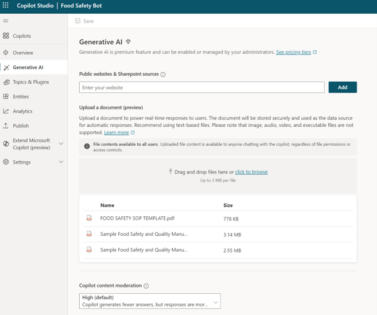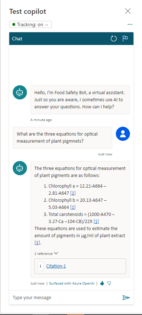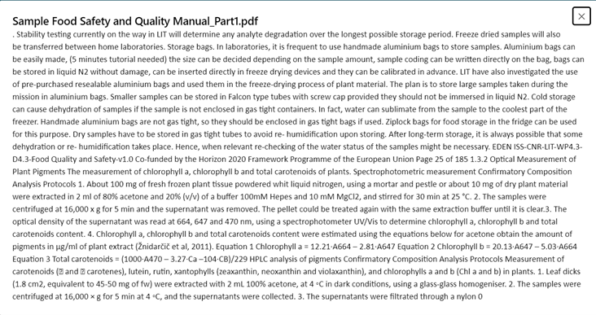Copilot Studio, formerly Power Virtual Agents, is a part of the Power Platforms suite that offers a solution to integrating Generative AI into a client’s daily task. In this article, I will explain the copilot and its abilities, clarify the different types of copilots, explain generative AI, explain how copilot studio fits, and provide a demonstration of Copilot Studio.
What is Copilot Studio?
Microsoft Copilot Studio is a low-code tool that allows you to customize and build AI-powered copilots. These copilots can engage with customers and employees in multiple languages across websites, mobile apps, and Microsoft Teams. It’s available both as a standalone web app and as an integrated app within Teams, catering to different use cases and preferences. With features like custom GPTs, generative AI plugins, and manual topics, Copilot Studio opens possibilities for enhancing user interactions and automating tasks.
Copilot Confusion
Before going into depth on Copilot Studio, it is important to clarify some confusion about the different types of Copilots and their role in Copilot Studio. First is the Copilot, which is open to anyone with a Microsoft account. This can be accessed through the Edge browser. This Copilot has access to the internet and can get current information, unlike Chat GPT, which had its last data update in 2022.
The other Copilot worth noting is Microsoft Copilot for Microsoft 365. This Copilot is a paid option with access to your organization’s data. It can help you with tasks such as getting summaries of emails, designing PowerPoint presentations, analyzing data in Excel, and many more. Currently, this Copilot is $30 a month per user.
Introduction to Generative AI
Generative AI is a newer feature of Copilot Studio that enhances the copilot’s conversational abilities. Instead of relying solely on predefined trigger phrases, generative actions allow your copilot to select one or more topics or plugin actions using GPT when responding to user queries. Each topic or plugin action has an associated description, which plays a crucial role in determining which item should be selected. This dynamic approach creates more natural and fluid conversations for users interacting with your copilot. The copilot populates any required inputs for these actions based on the user’s query or previous conversation context, resulting in an adaptive and context-aware assistant.
Where Does Copilot Studio Fit?
Copilot Studio has two avenues of purpose. One route, the one that is the same as Power Virtual Agent, is creating custom Copilots from scratch based on files and data inputted by the designer. This is the type of Copilot seen in the demo. The other route is extending the Microsoft Copilot for Microsoft 365. Organizations that decide to purchase this Copilot can still benefit from the use of Copilot Studio. Instead of creating a Copilot from scratch, we can instead extend the Copilot to enhance its performance. Here are a couple of benefits of extending the Copilot:
Tailored Experience:
- A custom copilot can be designed to address your organization’s unique needs, industry, and processes.
- It can provide context-aware responses, making interactions more relevant and efficient.
Domain Expertise:
- General copilots are versatile but lack deep knowledge in specific domains.
- Custom copilots can be trained on domain-specific data, ensuring accurate and specialized answers.
- For example, a custom copilot for a medical clinic can handle patient inquiries about appointments, prescriptions, and symptoms more effectively.
Brand Consistency:
- A custom copilot can reflect your brand’s voice and personality.
- It uses terminology consistent with your organization, reinforcing brand identity.
Privacy and Security:
- General copilots may not meet specific privacy or security requirements.
- Custom copilots can be built with strict access controls, ensuring sensitive information remains confidential.
Control and Ownership:
- With a custom copilot, you have complete control over its behavior, training data, and updates.
- You’re not dependent on external providers or licensing agreements.
Demo Time
For the demo, I created a basic Copilot and integrated Generative Answers. To add data for your Generative AI, click on the Generative AI tab and upload data. You can enter a website, SharePoint site, or upload files. Files have a maximum size of 3MB and can add up to 100 files. PDF files work best. For this purpose, I uploaded 3 PDF files.

After the files have been uploaded, it takes about 10-15 minutes for the chatbot to learn and train the data. When asking the Copilot about information within the data, it will respond with a citation. Below the message, it will give the option for the user to give a thumbs up or thumbs down to show whether the answer is accurate.

The citation shows where the data was found. It gives information before and after in order to give context.

However, the answers are not always correct. Below is an example of when copilot responds with inaccurate data:

![]()
I have noticed that copilots struggle to interpret tables of data from PDFs. Although generative AI is powerful, it is still new and developing.
Conclusion
To conclude, Copilot Studio provides an efficient and automated approach to business via a personalized AI assistant. As we continue to offer solutions to clients, we can utilize Copilot as a tool to enhance customer interactions, automate repetitive tasks, and improve productivity.
If you have questions or would like to contact our team, please visit our website.

 RSMUS.com
RSMUS.com

